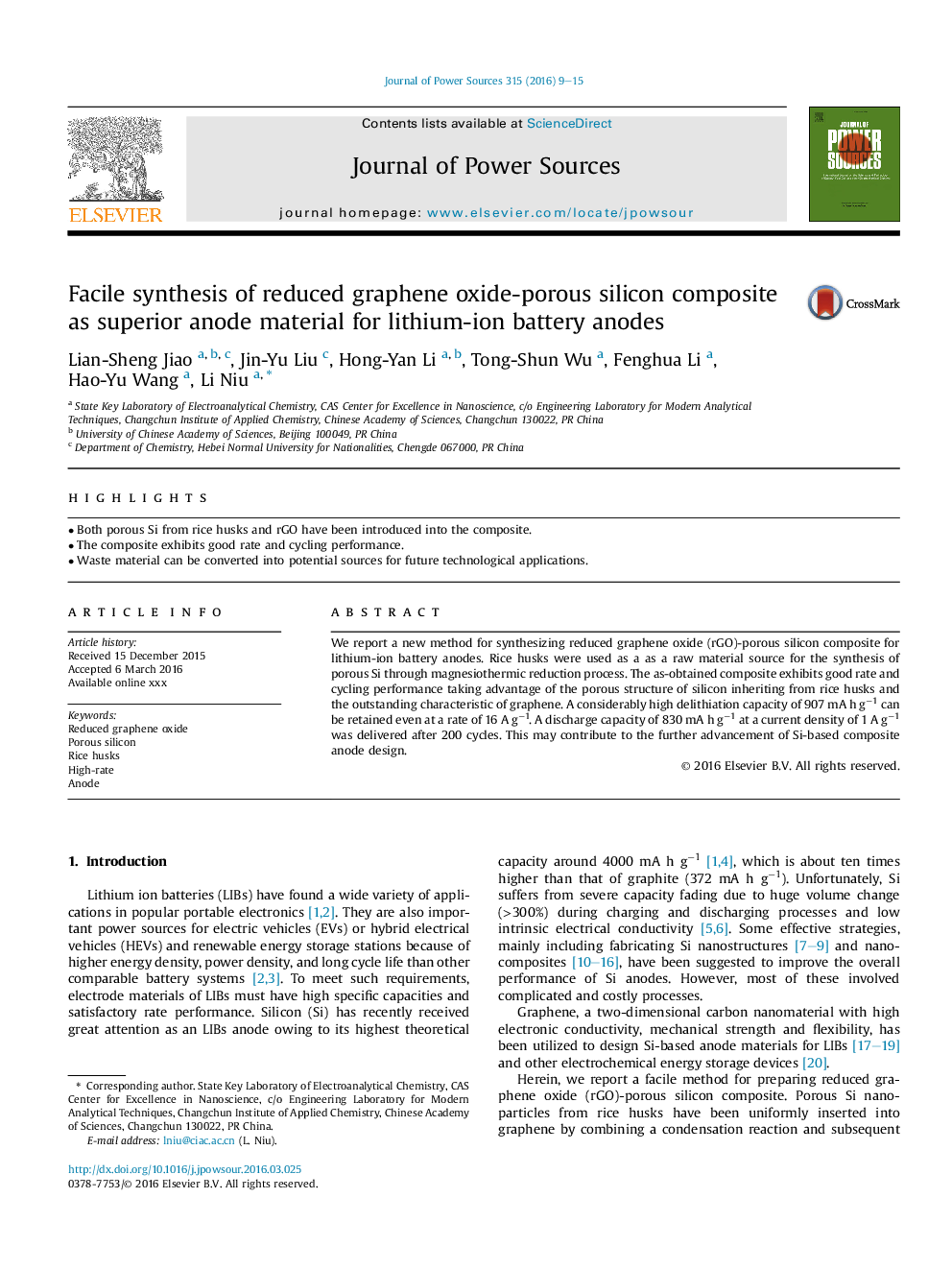| Article ID | Journal | Published Year | Pages | File Type |
|---|---|---|---|---|
| 7728417 | Journal of Power Sources | 2016 | 7 Pages |
Abstract
We report a new method for synthesizing reduced graphene oxide (rGO)-porous silicon composite for lithium-ion battery anodes. Rice husks were used as a as a raw material source for the synthesis of porous Si through magnesiothermic reduction process. The as-obtained composite exhibits good rate and cycling performance taking advantage of the porous structure of silicon inheriting from rice husks and the outstanding characteristic of graphene. A considerably high delithiation capacity of 907 mA h gâ1 can be retained even at a rate of 16 A gâ1. A discharge capacity of 830 mA h gâ1 at a current density of 1 A gâ1 was delivered after 200 cycles. This may contribute to the further advancement of Si-based composite anode design.
Related Topics
Physical Sciences and Engineering
Chemistry
Electrochemistry
Authors
Lian-Sheng Jiao, Jin-Yu Liu, Hong-Yan Li, Tong-Shun Wu, Fenghua Li, Hao-Yu Wang, Li Niu,
